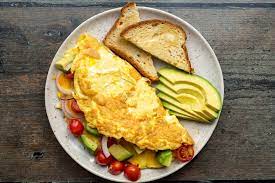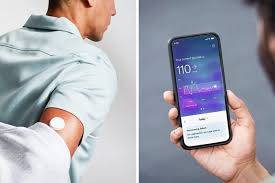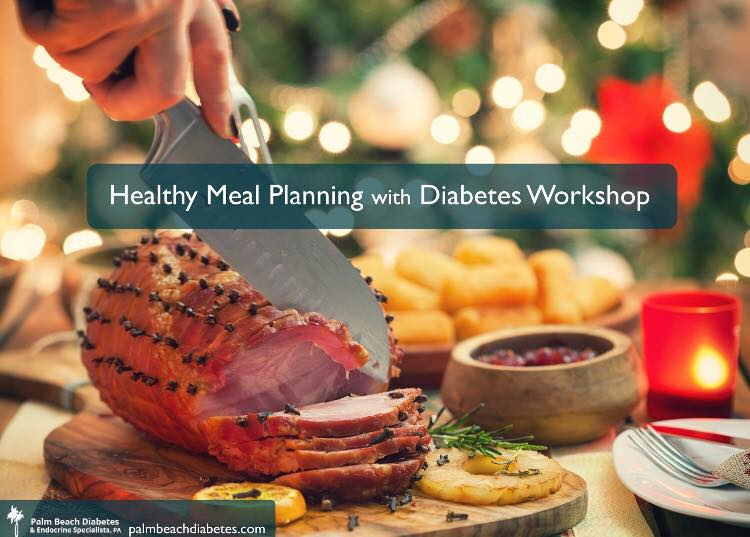Best Foods to Eat When Taking a GLP-1 Medication
By: Jessica Hrdlicka MS, RD, LD/N, CDCES
 Protein Helps You Keep Muscle While Dropping Pounds
Protein Helps You Keep Muscle While Dropping Pounds
Foods that contain protein should be a top focus for people on a GLP-1, Protein protects from muscle loss. Whenever anyone loses weight quickly (from medications or any other reason), they will lose muscle along with fat, and the goal is to keep as much muscle as possible.
Top protein foods to eat:
- Lean meat: This includes chicken, turkey, pork loin, pork chops and lean cuts of beef (sparingly).
- Fish and seafood: Most types of seafood are good options. Just stay away from fried fish and butter sauces.
- Meatless sources of protein: Consider cottage cheese, eggs, tofu, & Greek yogurt.
- Liquid protein shakes or supplements: These can be helpful with getting enough protein and to prevent skipping meals.
Fiber-Rich Foods Help Keep You Regular
Taking in less food and fluids while you're on a GLP-1 can impact regularity. Fiber helps prevent constipation and keep everything moving smoothly. Often people trying to diet will avoid carbohydrates, but it’s better to include a consistent amount of high-fiber carbs daily.
Top fiber foods to include:
- Whole grains: Brown rice, quinoa, and whole wheat contain nutrients and fiber.
- Beans: Black beans, white beans, chickpeas and kidney beans all check two boxes — high in protein and fiber.
- Squash are a great option — low in fat and high in fiber.
- Fruit – Berries are high in fiber and antioxidants
- Avocados – High in fiber and healthy fats.
Vegetables Provide Key Nutrients and Hydration
It is recommended to consume one to two servings of vegetables with meals. If you aren’t experiencing diarrhea or bloating, there are no restrictions on what to choose. A side benefit: Veggies are also a great source of fiber and have hydrating benefits.
When people eat less food and are less hungry, they also tend to drink less and are more susceptible to dehydration. Many people will use electrolyte powders or sugar-free sports drinks in addition to water to help prevent dehydration.
The general goal for fluid intake is 8 to 10 cups per day, this can vary from person to person. Please talk to your doctor about hydration goals.
Best Snacks to Eat When Taking a GLP-1 Medication
Healthy snacks if you’re on a GLP-1:
- Yogurt: Pick a Greek yogurt with more protein that doesn’t have too much added sugar.
- Fruit & Low fat cheese: Not only can it quench a desire for something sweet, but fruit also contains fiber and can help with hydration. Apples, pears, and berries are all good options.
- Nuts: One-quarter cup of nuts is a great way to satisfy hunger and provides a good balance of unsaturated fat, protein, and fiber, says Singh.
Foods to Avoid When Taking a GLP-1 Medication
There are no forbidden foods for people taking GLP-1s, but some foods or types of foods may be more likely to cause side effects. Mist common side effects of the medication class are nausea, vomiting, diarrhea, constipation, nausea, and dry mouth.
If a person is having issues with nausea, they should avoid high-fat foods on injection day and the day after because of the slowed stomach emptying.
In addition to causing GLP-1 medication symptoms to act up, fatty foods can cause acid reflux in some people.
High-fat foods to avoid on a GLP-1:
- Red meats that are higher in saturated fat: Fatty cuts of red meat, processed meats, and bacon should be eaten only occasionally, if at all.
- Highly processed foods and sugary drinks: Luckily, the recommendations for a healthy diet in the general population are the same for those on GLP-1 medication — and that means fried foods like fried chicken or French fries and ultra-processed foods should be avoided, says Singh.
- Pastries, donuts, cookies, and sugary drinks (including soda or any juices): These should also be limited or avoided.
For more information on diabetes management, chronic kidney disease weight loss and nutrition or to schedule your CGM Class call 561-659-6336 ext 8012 to schedule an appointment today. Please enjoy our May 2025 Living Well with Diabetes Newsletter!
The New Lingo Sensor- Glucose Monitoring for People Without Diabetes
By: Monika Lambertson, MS, RD, LD/N, CDCES.
 The new Lingo continuous glucose monitor from Abbott is an FDA-approved over-the-counter biosensor designed to help individuals 18 years of age and older without diabetes improve their metabolic health by tracking glucose levels and providing personalized insights through a companion app. It's built upon the same technology as Abbott's FreeStyle Libre but Lingo is specifically marketed for non-diabetic users who want to gain a better understanding of how their body responds to food, exercise, stress and other factors.
The new Lingo continuous glucose monitor from Abbott is an FDA-approved over-the-counter biosensor designed to help individuals 18 years of age and older without diabetes improve their metabolic health by tracking glucose levels and providing personalized insights through a companion app. It's built upon the same technology as Abbott's FreeStyle Libre but Lingo is specifically marketed for non-diabetic users who want to gain a better understanding of how their body responds to food, exercise, stress and other factors.
How Does Lingo Work?
The Lingo sensor is inserted on the back of the arm and uses a minimally invasive filament that sits underneath the skin where it samples the fluid between your cells (interstitial fluid), gathering glucose information every minute. Data is transmitted to a mobile app (only iPhone 11 device or later), providing users real-time insight on how their glucose levels respond to various activities and foods, and offers personal recommendations and coaching to help users make informed lifestyle choices and build healthy habits. The sensor is about the size of two stacked quarters, lasts 14 days, and is water resistant up to 3 feet deep for up to 30 minutes.
Lingo app features also include:
- Lingo Count: A proprietary algorithm that translates glucose spikes into a single, easy-to-understand metric, helping users visualize their glucose patterns.
- Food and Activity Logging: Users can log meals and exercise, providing the Lingo app with additional context to interpret glucose data.
- Integration with Apple Health: Lingo can be synced with the Apple Health app to automatically track workouts.
Who may benefit from Lingo:
Lingo is not intended for the management or diagnosis of diabetes and is not recommended if you use insulin or experience hypoglycemia. If you have prediabetes or a family history of diabetes, talk with your health care professional if you think Lingo may be a helpful tool for you! To learn more about Lingo and pricing options go to hellolingo.com.
Healthy Meal Planning Class & Pre-Diabetes Sessions are available! Join our classes to stay motivated & feel great this Summer!

Healthy Meal Planning & Weight Loss Class
West Palm Beach Location (Virtual or In Person!)
Temple Israel 1901 N. Flagler Drive
West Palm Beach, FL 33401
Tuesday June 10th10am-12pm
Boynton Beach Location
6056 Boynton Beach Blvd.
Boynton Beach, FL 33437
Tuesday June 17th 10am-12pm
Pre-Diabetes Class
West Palm Beach Location (Virtual or In Person!)
Temple Israel 1901 N. Flagler Drive
West Palm Beach, FL 33401
Tuesday June 17th 10am-12pm
If interested attending this program please contact our scheduling department at (561) 659-6336 Extension 8001 today!
At Healthy Living with Diabetes we want to ensure that you are satisfied with all services received. We also would like your input on educational workshops that you would like us to offer, information you would like to read about in Healthy Living with Diabetes Monthly or feedback on any workshop that you may have attended. You can contact the director of education personally by email jcook@PBDES.COM or leave a message at (561) 659-6336 ext. 8012. We would love to hear from you!

Check us out on the web!
www.palmbeachdiabetes.com
www.facebook.com/pbdeseducation

